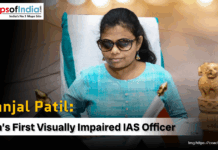Today’s southern India was once ruled by the Pallava dynasty between the 2nd and 9th centuries CE, who are known for their great architecture. The Pallava dynasty was one of the most significant dynasties of ancient India, and a major force in southern India. Kanchi or modern-day Kanchipuram was the capital city of the Pallavas. Telgu, Tamil and Sanskrit were their main languages. Different architectural patterns, especially the stone-cut religious sites in Mahabalipuram, are associated with them. Most of their places worships were devoted to Lord Shiva. The Pallavas are known for their cultural development rather than political acumen. Gifts of land were frequently given to gods and Brahmins. Also, Vedic sacrifices and Aswamedha rites were part of their rituals. For writing purposes, a one-of-its-own-kind southern Brahmi script was developed by them, which was later on exported eastwards. It is said that this writing script has influenced almost all the southern Asian scripts.
The Doubtful Origin of Pallavas
The first great ruler of the early Pallavas is thought to be Skandavarman, though there are indications that there might be predecessors of Skandavarman as well.
The origin of the Pallavas is still a mystery as no reliable information is available. It is believed that they entered India from the south. Some scholars also believe that the Pallavas were from the Pahleves of Parthians, and migrated to south. But again, there is no strong evidence to prove this.
As per another theory, the Pallavas was the native dynasty and rose to power after the Andhra empire.
According to Srinivas Aiyangar, the Pallavas were part of the ancient Naga people. They first lived in the Tondaimandalam districts around Madras, and later won Tanjore and Trichinopoly districts. The Pallavas were the prime enemies of Tamil kings, and today palava means “rogue” in Tamil language.
Also it is believed that the origin of the Pallavas was from a Chola prince and the Naga princess of Manipallavam. The princess gave birth to a son who was made the king of Tondaimandalam. The dynasty was named after his mother’s homeland. Even in the literature of the Sangam era, the Pallavas as Tondaiyar have been described. But this theory is also debated.
Administration of Pallavas
Most of the Pallavas kings were great scholars who were given titles like Maharajadhiraja, Dharma-maharjadhiraja, and Agnistomavajpeya. For their assistance, the ministerial council was constituted. All the matters of the villages were looked after by the council or sabha. Informal gathering in the villages were known as urar and were used to assist village courts. Also, minor criminal cases were resolved at village-level courts. Towns and districts had judicial courts, with the king as the supreme authority of justice. All land was owned by the king. Villages with huge inter-caste population used to pay taxes to the king. In the Brahmadeya village, the entire land was either given to a single Brahmin or a group of Brahmins, who were exempted from paying royal taxes. Also, there was one unique category of land known as the sripatti or tank land. The village tank constructed by the villagers used to get maintenance funds from this land. There were two types of taxes – the one paid to the state, and the one collected in the villages and spent for the need in the village.
Architectural styles under Pallavas
Pallava temples were made in four distinct styles. These are:
- Mahendra style: This is a cave-style architecture and can be seen in the Ekambaranatha (Kanchipuram) Temple of the Pallavas.
- Mamalla style: These are monolithic temples made from single stone. There are seven Pagodas situated near Mahabalipuram that display an outstanding quality of this Pallava art.
- Rajasimha style: The Kailasha Temple of Kanchi displays this style. The temple has a pyramidal tower and its mandapam is made in a flat-roof style.
- Aparajita style: This resembles with the Chola architecture style, being more elaborate. A few temples at Dalavanur display this style of architecture. Also, one can see beautiful figures of Pallava kings and queens.
The Pallavas contribution to literature was also great. Bharavi and Dandin lived in the court of the Pallava. Dandin had written many poems and one of these is so unique that if read normally it tells the story of the Ramayana and if read in the reverse order then narrates the study of Mahabharata.
Pallava Society
The history of the Pallavas is very complex and covers about four centuries. The period of Pallavas is significant as it completed the Aryanisation of southern India. The North Indian Dharma Sastras gained full authority during the Pallavas’ reign. The University of Kanchi was an important seat of education in the South. This has been mentioned in the writings of Hiuen-Tsang, a Chinese traveler.
Most of the kings of Pallava dynasty were orthodox Hindus who worshipped Lord Shiva. Some Jain monasteries were destroyed by Mahendravarman as he was fanatical about Jainism. Like Jainism, Buddhism also lost its appeal during this time. But overall the Pallavas were flexible towards other religions and beliefs.
Local traditions were replaced by the Vedic traditions. As Brahmins had the knowledge of the Vedas, so they achieved superior status.
Early education was influenced by Jains and Buddhists. Madurai and Kanchi were the main centers for Jain institutes but soon these were replaced by Brahminical institutions. Popularity of mathematics increased in the 8th century. The main medium of instructions in all the schools was Sanskrit.
Decline of the Pallavas
The Pallavas were invaded by the Chalukyan army and posed a major threat to its capital, Kanchipuram. The Pallava power came to an end with the defeat of their last king, Aparajitavarman, by the Chola king close to the 9th century.



